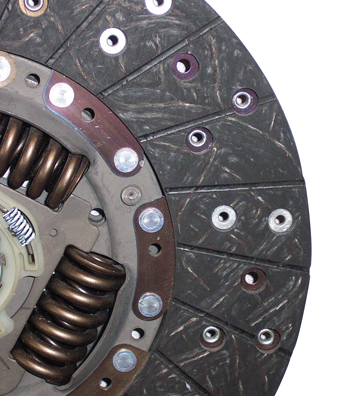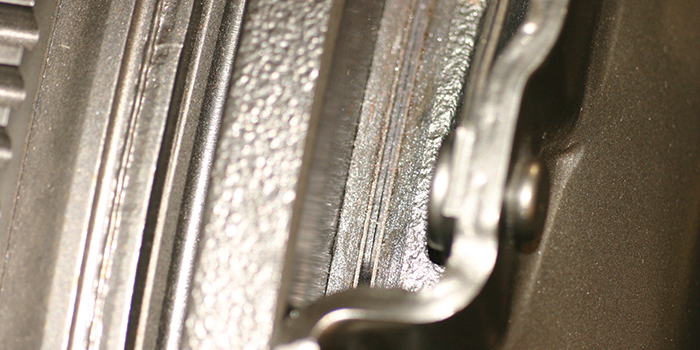 Once a clutch starts to slip while engaged, its lifespan will be very short. Slipping increases wear; slipping also generates heat that increases the wear on the disc and causes the friction material to glaze and crack. It all happens very quickly. The real tragedy is when it happens to a newly installed clutch. Here are four problem areas that can cause a fresh clutch to slip.
Once a clutch starts to slip while engaged, its lifespan will be very short. Slipping increases wear; slipping also generates heat that increases the wear on the disc and causes the friction material to glaze and crack. It all happens very quickly. The real tragedy is when it happens to a newly installed clutch. Here are four problem areas that can cause a fresh clutch to slip.
- Material is Worn: Friction material is usually riveted to the disc. If the material is worn to the rivets, the clutch will slip. Also, the loss in thickness will prevent the pressure plate from putting the full clamping force on the disc.
- Contamination: If engine oil, gear lube or brake fluid from the slave cylinder makes it past the seals onto the disc, it can cause the disc to slip. Replacing the seal is important, but diagnosing why the seal failed is even more critical. Often, a plugged crankcase or gearbox breather will cause higher-than-normal pressures inside the case and push oil past the seal. Worn pilot and input shaft bearings can also cause the seals to leak.
- Problems with Alignment: It’s extremely important that the flywheel, clutch disc and clutch pressure plate operate in an exactly perpendicular plane with the engine crankshaft and transmission input shaft. If the bellhousing surfaces of the engine or transmission aren’t cleaned before reassembly, or the bellhousing is warped, the flywheel and clutch assembly will not be operating perpendicular to the plane of engine and transmission rotation. When excessive flywheel, disc or pressure plate runout occurs, the air gap diminishes until the disc begins dragging against the flywheel. When this occurs, the manual transmission grinds going into reverse, and forward gear engagement becomes increasingly difficult.
- Pressure Plate Problems: The pressure plate must apply a tremendous amount of pressure against the clutch disc to keep the clutch from slipping against the flywheel at maximum power output. Generally speaking, the minimum clutch pedal travel in most vehicles is about 4”. To achieve complete release, a typical pressure plate must create an air gap of about 0.050” between the disc and flywheel. This amount of air gap is required to compensate for disc marcels and minor amounts of runout that occur in the flywheel, disc and pressure plate during manufacturing. Obviously, disc thickness of 0.020” leaves only about 0.030” of clearance or “air gap” to disengage the disc from the flywheel.














